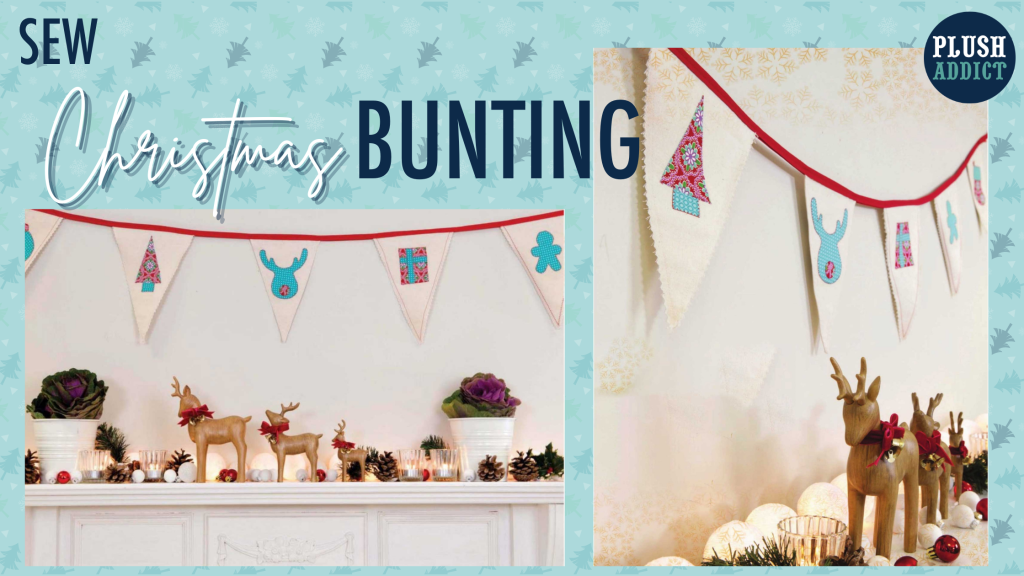


How To Make Your Own Pyjamas: Part 2

Boring Legal Bit: If you follow any tutorial or guidance found in this post, or on this blog, you agree to be bound by our disclaimer which can be viewed here
Hello Seam-Stars! Thanks for joining me again for the second post in our “Make your own Pyjama Bottoms” series
Yesterday’s post gave you instructions on how to make your pyjama bottom pattern. If you’ve not done that yet – you need to hop over and make your pattern pieces – otherwise this post won’t make any sense at all!
Don’t be daunted… there are videos and everything!
In this post we’re going to talk about the fabrics you can use to make your own pyjama bottoms, as well as a sewing tutorial on how to sew them up once you have created your pattern…

Supplies you will need:
- Your pattern drafted from this post
- 2.5-3m of your chosen pyjama fabric, pre-washed (see below for options) We totally recommend using flannel fabric. (the amount required will on the size & more importantly length of your trousers – our sample is a standard UK 14/16. Once you have drafted your pattern you can work this out exactly – usually it’s waist-to-ankle measurement x 2 plus seam allowances) [We used A E Nathan – Comfy Flannel – Pink Camo]
- 1m of 2cm Wide Elastic [We used Hemline White Woven Ribbed Elastic 20mm]
- 1m of 2cm (or wider) ribbon [ Berisfords Shocking Pink Velvet Ribbon 22mm ]
Sewing Kit You Will Need:
- Sewing machine
- Fabric Scissors OR rotary cutter, mat & ruler
- Tape Measure or ruler
- Pins or Clips
- Pinking Shears or rotary cutter pinking blade
- Hand Sewing Needle
- Basic Sewing Kit
- Safety pin
Choosing fabric to make pyjama bottoms
You can use a number of different fabrics to make PJs… In our sewing tutorial we’ve used flannel fabric – and for good reason… It’s a perfect fabric choice! But not the only one…
Firstly, think about the fabric weight you’d like – you can both use lightweight or slightly heavier weight fabrics when making pyjamas – the season will determine the best choice for your garment.
We would definitely recommend natural, breathable fabrics over manmade fabrics for PJS. The exception here is manmade fleece which would be a good choice in very cold weather.

Here are our top picks for fabrics suitable for pyjamas
- Flannel fabric: We LOVE flannel fabric for making pyjamas… It would be our first choice. It’s soft, warm, cosy, an easy sew & breathable – perfect for PJs! If you’re not really sure what flannel fabric is then check out our Fabric Guide To Flannel for the full low down
- Quilting cotton: There’s a mind boggling choice of funky designs available in quilting cotton so you can make a garment that’s really bespoke & individual. It’s easy & stable to sew, as well as being breathable. The only downer might be the drape with some quilt cottons – some brands can be a little stiff.
- Jersey – Really comfy for PJ bottoms as they stretch when you do… if you know what I mean 😉 Natural fibre jersey is the best choice. Stretch fabric does require a little special handling and a stretch or ballpoint needle is required.
- Cotton lawn : Cotton lawn would make a great fabric choice for PJs – it’s lighter weight than regular quilting cotton & better suited for summer PJs. Soft, stable, better drape & breathable. Read our Guide To Cotton Lawn for more info about this fave fabric.
- Viscose: if you’re after something that has loads of drape & will result in a floaty pair of PJs then viscose is a good choice BUT viscose is rather slippery to sew. If you’re a beginner Seam-Star you would be best off trying one of the other fabric choices first to save swear words. Read our viscose tips and you can decide if it’s for you…
- Fleece: The season has to be right for fleece fabric pyjamas. Most (but not all) fleece is made from polyester and if you wear fleece in bed when it’s too warm you’re going to end up “glowing” in your new bottoms! Read all about fleece fabric here
Disclaimer: A note on sleepwear for children – We don’t advise making children’s nightwear, unless you source specially treated, fire resistant textiles. Many fabrics do not meet the fire retardancy requirements to be safe for children’s nightwear required under UK law
So once you’ve decided what fabric you’d like, you need to make sure you have all the supplies!
Sewing your pyjama bottoms
Important Notes:
- 1cm / ⅜” seam allowance throughout, unless directed.
- Prepare your fabrics as per manufacturer’s care advice.
- For steps using machine sewing, straight stitch, backstitching at the start & end using stitch length 2.5 unless otherwise stated.
- We have used an overlocker to finish the seams & prevent fraying, but you can refer to this post if you do not have an overlocker for alternative seam finishing methods.
- RST = Right Sides Together.
- WST = Wrong Sides Together.
- Read through the instructions fully before starting.
Cutting Your fabrics & notions
Cut out your prepared paper pattern, including the seam allowances.
You may wish to transfer the paper pattern to manilla template card for easier tracing or if you think you will make multiple pairs of pyjamas.
Alternatively trace the final pattern pieces more neatly & boldly on a fresh piece of pattern paper if your original pattern is a little scruffy.
Cutting Out:
From The Flannel Fabric Cut:
1 x Mirrored Pair of trouser fronts from your prepared pattern
1 x Mirrored Pair of trouser backs from your prepared pattern
1 x Length of elastic that fits your waist measurement
Sewing together the pyjama bottoms
- Place one front leg & one back leg RST . Pin down the long outer edge & sew. Overlock/ seam finish as desired (check out our post here for more info on seam finishing without an overlocker).

2. Then, with RST, pin down the lower inner leg, not including the crotch & sew this together. Overlock/finish as desired.


3. Line up the trousers along the crotch RST. Match the centre seams and pin in place all along the crotch seam.
Never miss a guide or tutorial
Click to join our mailing list!
4. Sew along the crotch seam, and overlock/finish as desired.



5. Press up the hem allowance first 0.5cm, then 1.5cm

6. Hem by hand or by machine using a straight stitch. Repeat for both legs.
7. Press the waistband casing over by 0.5cm, then 2.5cm

8. Pin and stitch in place, leaving a 5cm gap to insert your elastic.
9. Insert your elastic, guiding it using the safety pin secured to one end.

10. Zig zag stitch the two ends of the elastic together, and slip this joined end into the elastic casing.
11. Sew the remainder of the casing channel closed, being careful not to catch the elastic.


12. If you want to add a decorative bow, cut a length of ribbon approximately 60/70cm long. Fold over the ends and stitch in place.


13. Mark the midpoint. Pin this to the centre front seam on your waistband. Stitch in place.

14. Tie in a bow!

And you’re finished, well done!
If you make a pair of trousers please let us know if the comments!
Never miss a guide or tutorial
Click to join our mailing list!


What are Continuous Zips? A Product Guide

Ever wondered what a continuous zip is?
Does adding a zip pull to zip tape seem daunting?
We’re here to help!
Here at Plush Addict we offer a huuuuge selection of zips for sewing to help your projects achieve the look you dreamt of!

Boring Legal Bit: If you follow any tutorial or guidance found in this post, or on this blog, you agree to be bound by our disclaimer which can be viewed here
With zipper tape choices ranging from rainbow to block colour… flat to flowery zip pulls, we’re sure to have something for your next project.
Read on for more info about what a continuous zip is, and why you might want to use one instead of a regular zip
Then… see our tutorial on how to add zip pulls to continuous zip tape… We’ve provided you with a photo tutorial, as well as a video demo at the end…

What is a continuous zip?
Continuous zips differ from others in that the zipper tape is sold by the metre, without zip pulls. This means you are able cut your zip to ANY size you like. It also means you can add TWO zipper pulls, cos… ya know… you have to love that look.

What are the benefits of a continuous zip?
Waste less: As you just use the amount of zip tape you need there is an environmental benefit to continuous zipper tape; with a little planning waste can be kept to a minimum and a length, with enough pulls ordered, can become multiple zips.
Any length: Cutting zip tape to size means you can have REALLY long zips!
Multiple zip pulls: It also means you can add TWO zipper pulls to your tape, giving you a funky zip just like this one
Greater personalisation – you can mix and match the zip tape and zip pulls to your heart’s desire
Looking for info on other zip types? Then check out our Zip Types Guide Post
Photo Tutorial: How To Attach Zipper Pulls to Zipper Tape

You will need:
We used:
Important notes
- Some zip tape comes with a pull/ slider, check the item description for details.
- When ordering zip pulls check they correspond with the tape size/ brand being purchased.
Method
1. Cut the tape to the required length. Use domestic scissors to cut through the teeth.

2. Pull the bottom 10cm of the zipper teeth apart.

3. With the back of the zip pull and back of the tape facing upwards thread 1 end of the tape into the zipper from the top. To make this easier angle the teeth into the pull from the side.

4. Repeat step 4. on the other side. Both sets of teeth want to sit toward the top of the clasp.
4. Repeat step 4. on the other side. Both sets of teeth want to sit toward the top of the clasp.

5. Keeping the 2 sides of teeth level with each other, hold the zip pull between one finger/ thumb then draw the 2 sides of the tape down through the pull with the other hand. The zip pull should then begin to move up the tape.
Alternatively, you may find it easier to place the zipper pull between the prongs of a fork (check out the video below!)
draw the 2 sides of the tape down through the pull
Never miss a guide or tutorial
Click to join our mailing list!
6. Slide the pull toward the top of the tape (without coming off the other end) then pull it back down to check the zip works.


7. If 2 zip pulls are required, repeat steps 1. To 5. from the other end of the tape.
And you’re done!

Handy Hint
If you find yourself struggling using this method try using a fork to hold the zip pull for you: tuck the bar of the zip between the central teeth (not the clasp where the teeth need to go).
…And if your fork won’t stay still; hold it steady with a blob of blue-tack.
Video Tutorial: How To Attach Zipper Pulls to Zipper Tape
Check out our video on how to attach zipper pulls to continuous zipper tape
Want to learn how to sew a zip in?
Find our tutorial on the blog where you can learn how to sew a cushion with piping and a zip or why not try making this reading cushion?
We hope you found this tutorial useful!
Let us know how you get along in the comments below 🙂
Never miss a guide or tutorial
Click to join our mailing list!
Follow Plush Addict on social media and keep an eye out for more tutorials!

New pattern alert! 🚨 Wanna make your own custom IKEA KALLAX storage boxes?
Free Pattern For A Water Bottle Carrier

The Ultimate Guide To Hand and Machine Sewing Needles
Tired of confusing needle types and struggling to understand needle size charts? Ringing a bell seam-star?
Well, the good thing is you’re not the only one! It can be suuuper duper confusing, especially if you’ve recently started sewing.
But every day is a school day, which is why we’ve put together a comprehensive guide to sewing needles to help you navigate the world of BOTH machine & hand sewing needles.
Or if you’re a seasoned seam-star this is a great refresher to brush up on your knowledge.
This is a long guide with lots of info so please use the quick links below to navigate if you need to:
At Plush Addict we have an incredibly well stocked, extensive range in our online haberdashery and needles are no exception!
We stock a variety of types, sizes and brands of hand sewing and machine sewing needles.
We realise that all of this choice can be confusing to the uninitiated Seam-Star so we hope you find this Ultimate Guide To Needles valuable when making the right needle choice for your next sewing project.
Choosing The Correct Sewing Machine Needle
Sewing machine needle sizes – let’s demystify those numbers!
Have you ever wondered why sewing machine needles have two numbers on either side of a slash?
You might see something like 90/14 or 80/12 on a machine needle and wonder what those numbers mean….
This part isn’t tricky – these numbers reference the European and American needle size systems. The higher number is European and the smaller number is American.
Longarm needles tend to have 3 numbers, both European and American as well as the Longarm sizes.
But what do sewing machine needle numbers mean you may ask?!
When it comes to sewing machine needles, remember – the bigger the number the bigger the needle
As a general rule of thumb
The finer/ lighter your fabric, the lower the needle number you need & vice versa – the thicker & heavier your fabric the higher the number needle you need.
Here are some example fabrics and the needle size you might consider. Fabric weights can vary extensively so the ideal needle size can vary between the same fabric type. If in doubt – sew a test on some off cuts of your fabric
- Cotton Lawn – 70/10
- Quilting cotton – 80/12
- Denim – 90/12
Remember the thread on a sewing machine must sit fully in the groove of the needle without any movement on either side. This ensures the thread doesn’t unravel or shred. However, the eye of the needle must be large enough for the thread to pass through with minimal friction.
We’ve made a sewing needle size chart below. So remember to come back to it if you ever need a hand choosing needles.
Sewing Machine Needle Sizes
| European Sizes | American Sizes |
| 60 | 8 |
| 70 | 10 |
| 75 | 11 |
| 80 | 12 |
| 90 | 14 |
| 100 | 16 |
| 110 | 18 |
| 120 | 20 |
| 130 | 22 |
Top Trouble Shooting Tip: When your sewing machine drops or skips stitches, it’s often caused by a damaged needle, or occasionally a mismatch between the size of the thread and the needle. Try changing your needle, this often fixes the problem!
Different Types Of Sewing Machine Needles
Universal Needles:
Universal needles aren’t as sharp as other regular needles. They are tapered allowing them to slide through the fabric without pulling threads on the weave.
They’re usually suitable for most types of fabric and are a good all-rounder to have on hand in your sewing stash
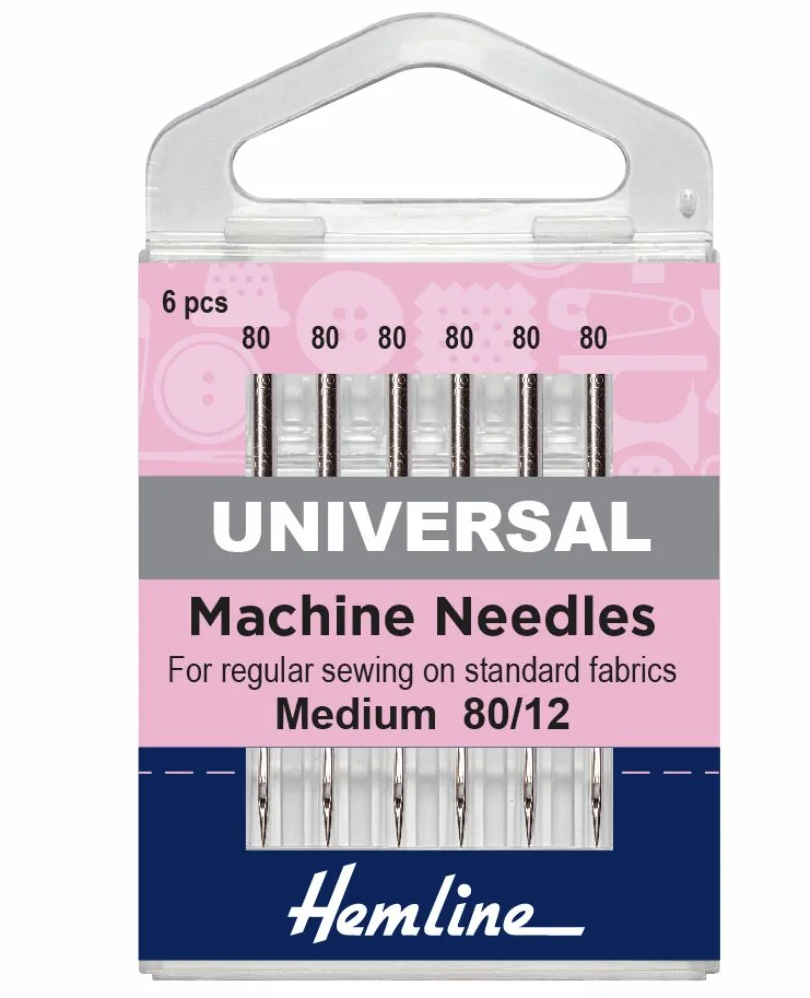
Ballpoint Needles:
With a rounded tip, ballpoint needles are designed to be used on jersey & stretch fabrics. The slightly rounded point gives ballpoint needles their name, and means the needle finds its way between the fabric fibres and avoids leaving behind a hole!
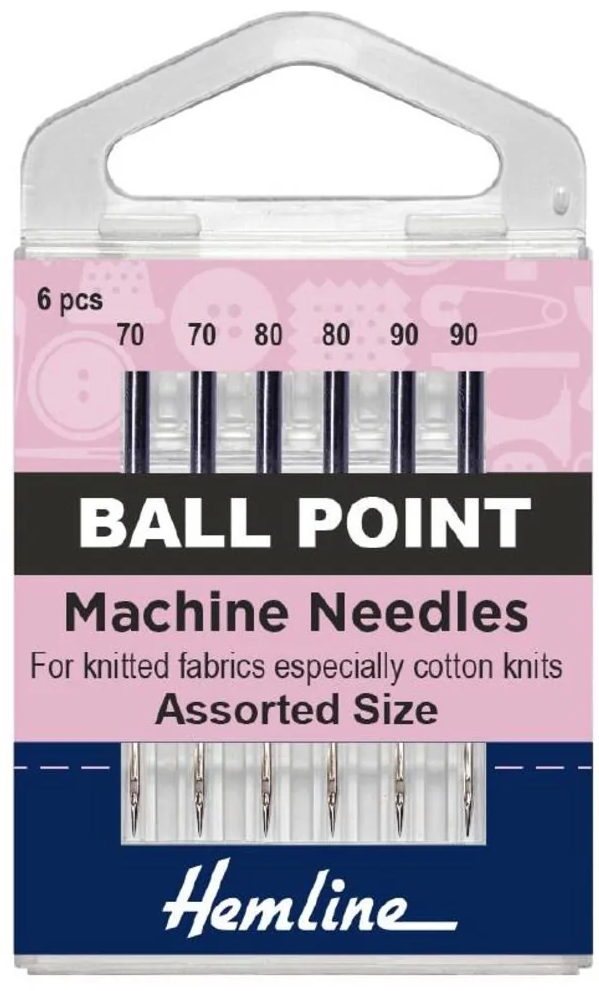
Embroidery Needles:
Embroidery needles are special needles that have a big eye, are polished and are designed for rayon and polyester machine embroidery threads. Have you seen how fast an embroidery machine needle can move in full swing? You want to make sure you’re using the right needle for the right job here…
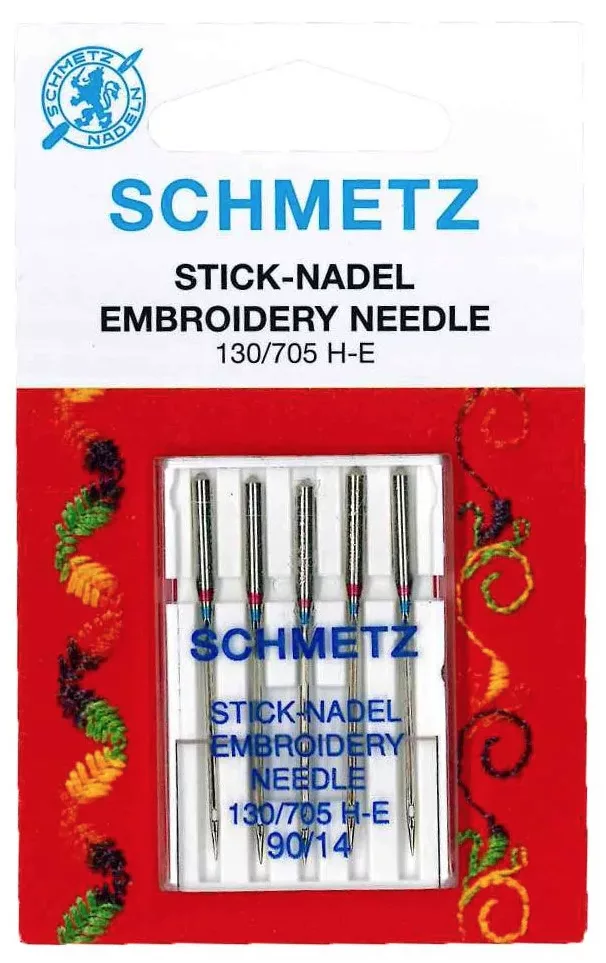
Metallic Needles:
Using metallic needles are the best choice when sewing metallic thread. Metallic needles have an enlarged, polished eye to prevent shredding and or splitting of this specialist thread.
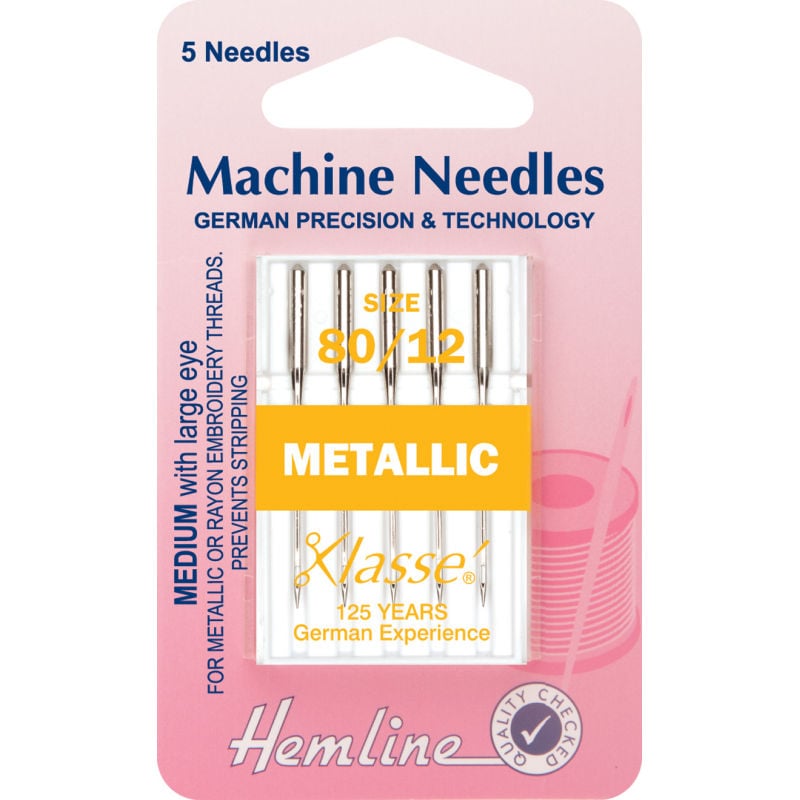
Quilting Needles:
Quilting needles for….. quilting! Featuring a strong, tapered shaft these needles have the ability to sew through multiple layers without breaking.
Ideal for those thick quilts and fluffy wadding!
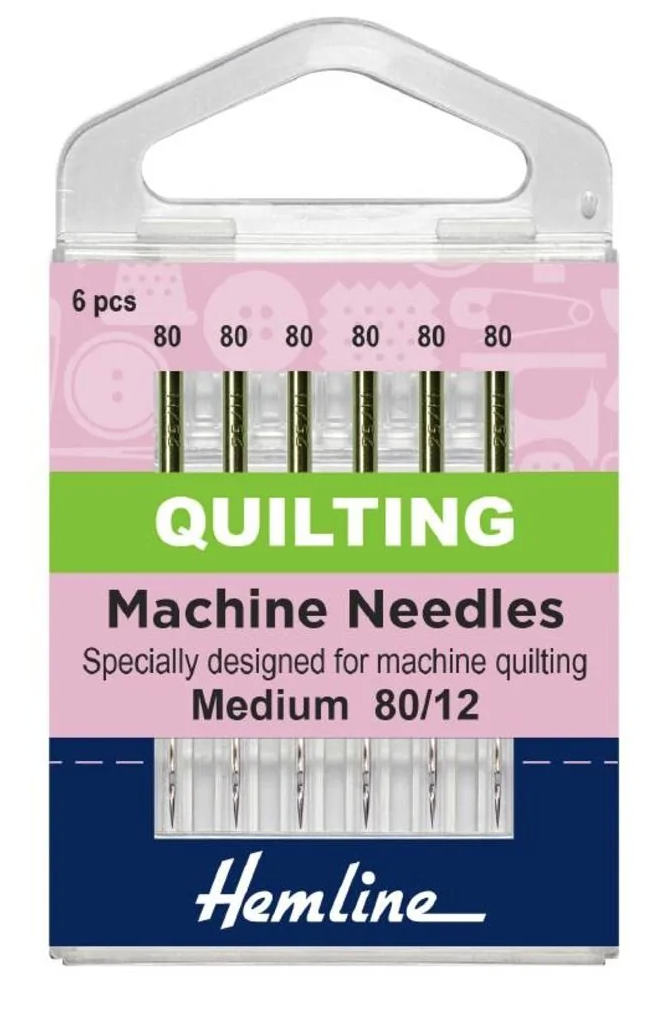
Topstitch Needles:
Topstitch needles tend to have a very sharp point allowing for precise, neat stitches.
They are ideal for woven fabric and they also have long eyes and grooves for thicker topstitch threads.
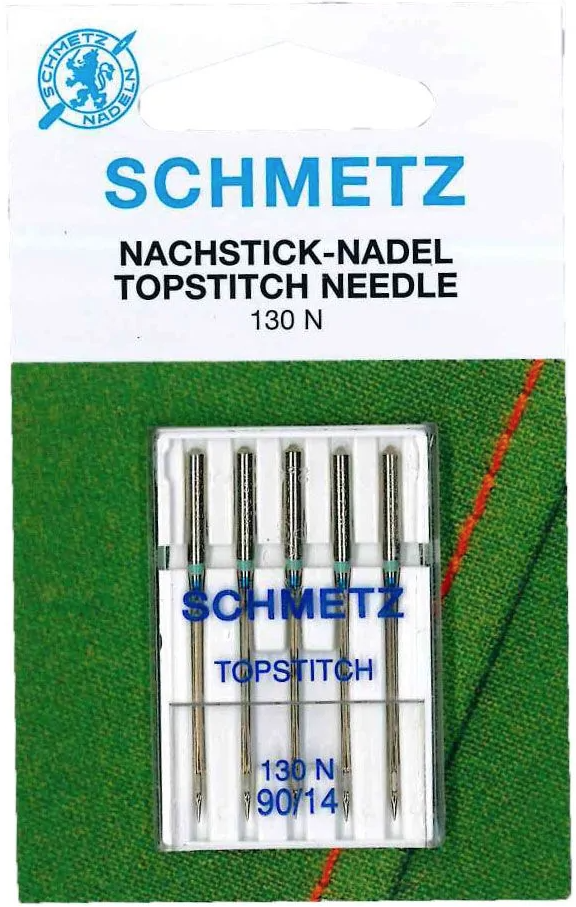
Denim Needles:
Denim Needles, also sold as Jeans Needles, are more heavy-duty than many other needles and are designed to be used with denim. These bad boys can cope with multiple layers of heavy denim fabric.
These needles are also a good choice for other heavy weight fabrics, like canvas.
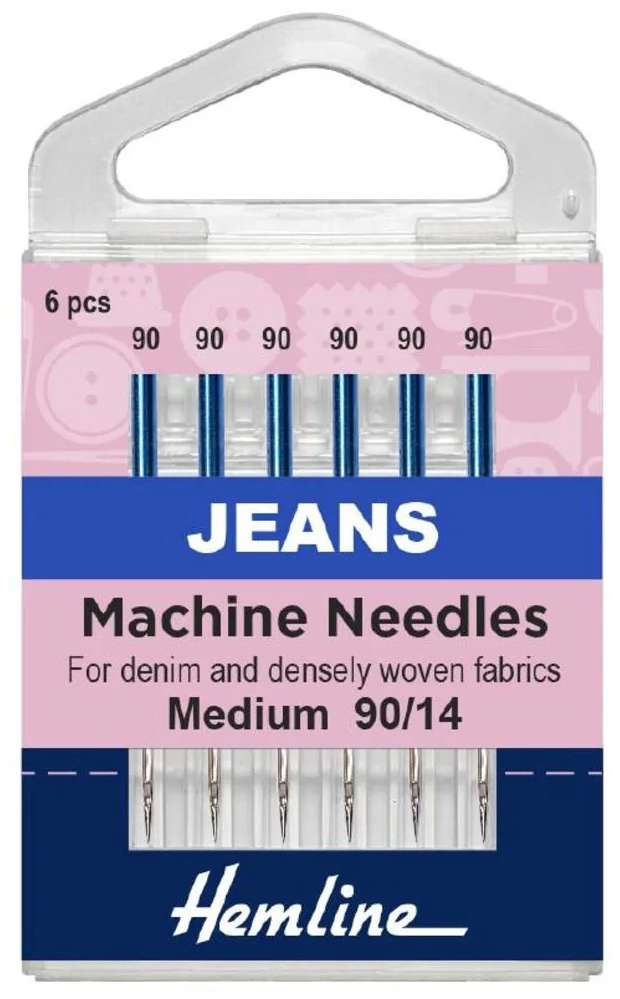
Leather Needles:
Leather needles are one of the sharpest cut point needles. These are designed to pierce authentic leather, artificial leather as well as other thick non-wovens.
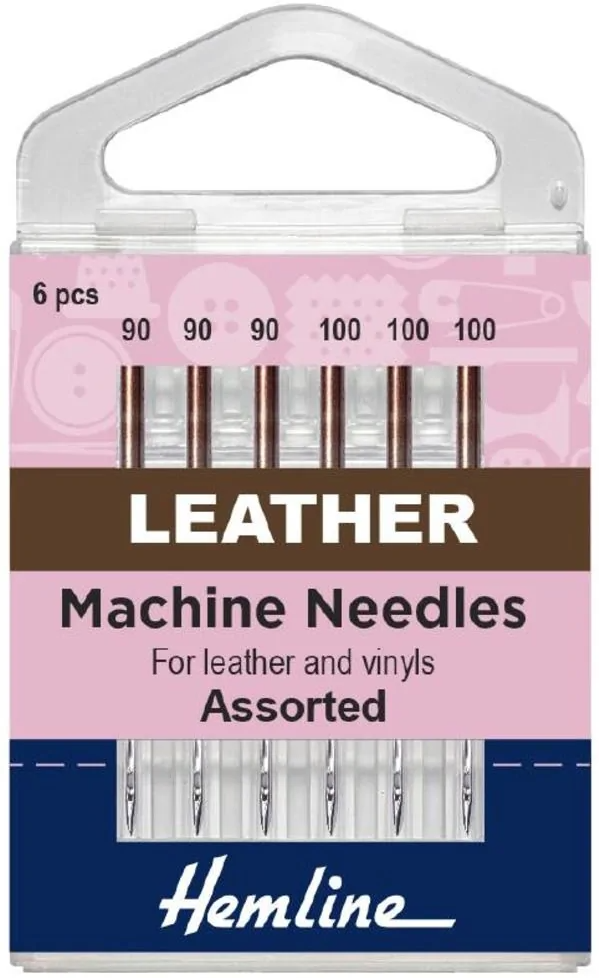
Hand Needle Types
Sharps Needle:
Sharps handheld needles are often short to medium length with sharp points. Sharps needles are a good all-rounder and are used for a wide range of hand-sewing tasks.
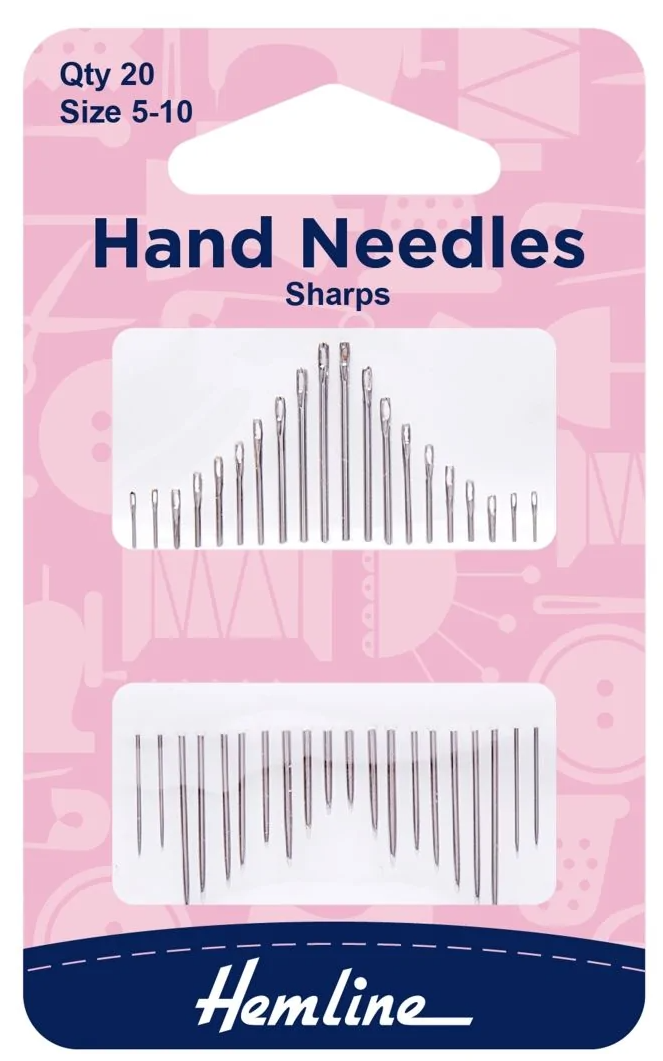
Betweens Needles:
Betweens needles are usually short, sharp needles used in hand quilting. As well as other sewing makes that require precise accuracy when sewing.
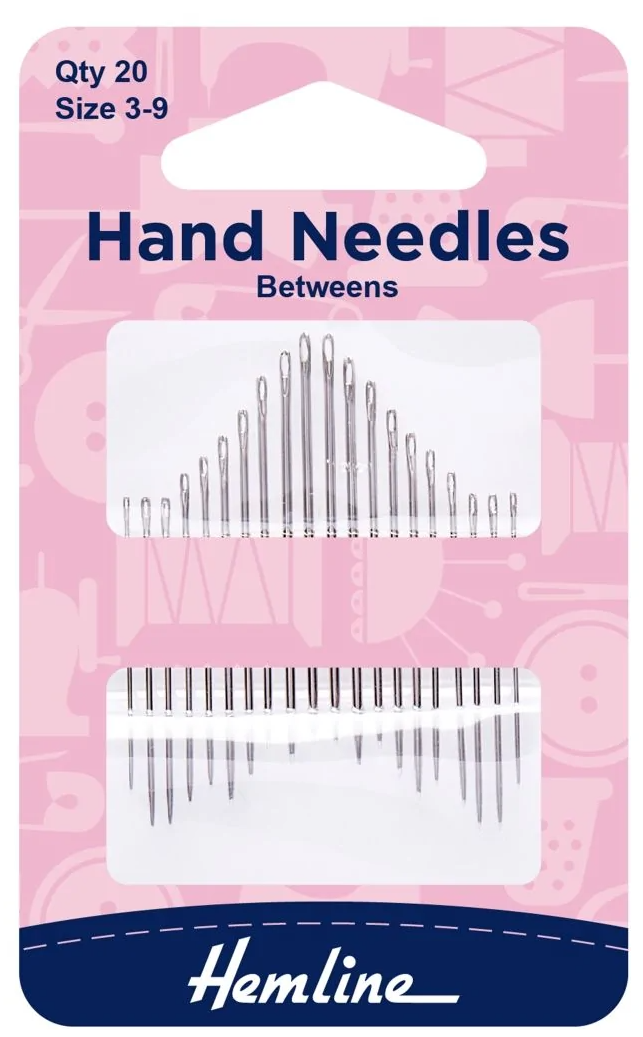
Hand Embroidery Needles and Crewel Needles
Hand embroidery have sharp points and eyes that are wider than the shaft of the needle and enable thicker threads to be used.
Embroidery is the art of sewing intricate, decorative stitches made with floss or thread.
Crewel refers to the same types of stitches, stitches but sewn with wool thread. The needle is the same in the embroidery & crewel techniques.
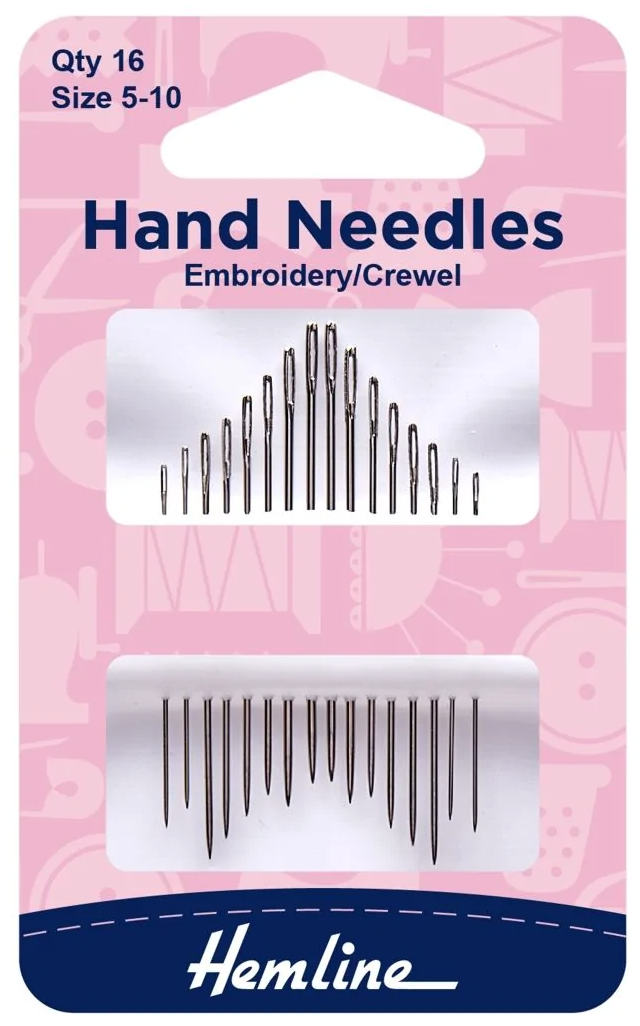
Hand Applique Needles
Hand applique needles are actually sharps needles and are ideally suited to applique and intricate hand-work.
Although they are sharps, some brands name them applique needles, to assist sewists that are looking for the best needle for hand applique.
Often short to medium length with sharp points.The needle eyes are often small and the needles come in several lengths & sizes. Clover needles really are the best quality and a dream to use.

Chenille Needles:
Another great embroidery needle is the Chenille needle, they are different to a regular embroidery needle.
Chenille needles are often referred to as a combination between a tapestry needle and a crewel or embroidery needle. They are sized the same as tapestry needles.
Usually starting at size 14 and all the way up to size 28 (which is the finest needle you can find).

Straw/Milliners Needles:
Straw or Milliners needles are looooong needles with round eyes, traditionally used for hat making. However, they can also be used for hand sewing.
They are often the choice of preference for those who prefer longer needles.
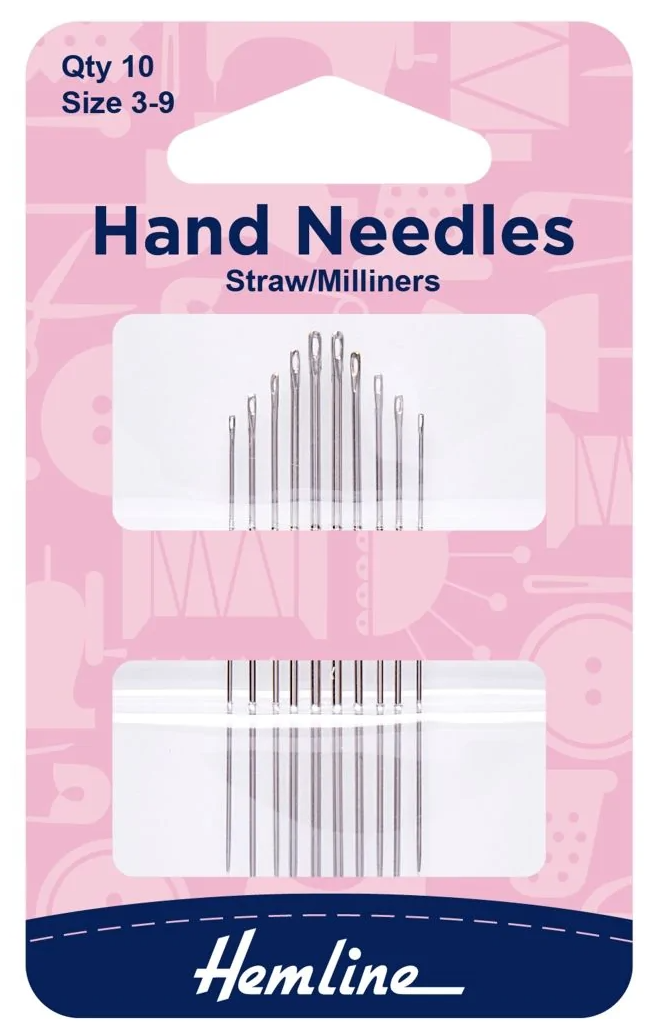
Tapestry Needles:
Tapestry needles are often used in needlepoint, petit point, counted cross-stitch and plastic canvas work. They have a large eye with a blunt, round point.
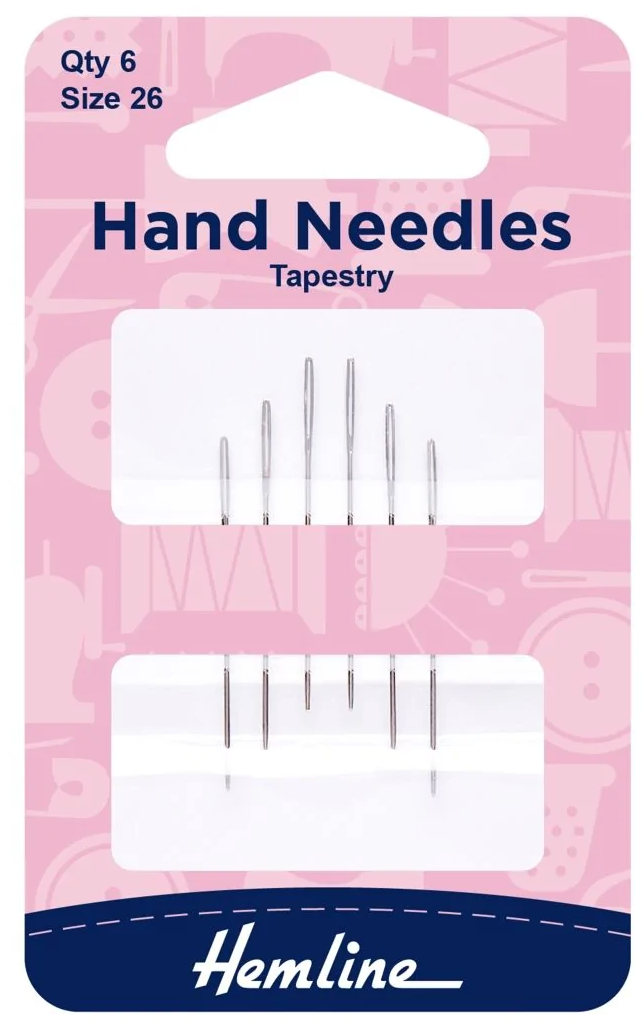
So that’s our ultimate guide to sewing needles! We hope you’ve brushed up on your knowledge and picked up on a few needle tips along the way.
Did you find this sewing needle guide helpful?
Please let us know in the comments below!

